Astatic's Final Edition D-104 Silver Eagle
astatic \A*stat"ic\, a. [Pref. a- not + static.] (Magnetism) Having little or no tendency to take a fixed or
definite position or direction: thus, a suspended magnetic needle, when rendered astatic, loses its polarity,
or tendency to point in a given direction.
Source: Webster's Revised Unabridged Dictionary, © 1996, 1998 MICRA, Inc.
a·stat·ic ( -st t k)
adj.
Unsteady; unstable.
Physics. Having no particular directional characteristics
Source: The American Heritage® Dictionary of the English Language, Fourth Edition
Copyright © 2000 by Houghton Mifflin Company.
Published by Houghton Mifflin Company. All rights reserved.
The definition of astatic that best suits the D-104 line of microphones is the one immediately above: having
no particular directional characteristics. For years this mic, dubbed the "lollypop" has been the most
sensitive microphone known in the communications field. They have the capability of picking up everything
in a room and more. I remember years ago operators testing their D-104 mics on their Browning and Tram
radios, by leaving them keyed while they walked out of the room and kept talking. Some could go to the
other end of the house and still have decent modulation. Moreover, I'm referring to the days before these
mics were amplified. Of course these mics would also pick up the TV, Stereo, people talking in the other
room and even activities going on outside the house. Even back then most everyone had his or her radios
turned up including the modulation. In addition, many of the high-end tube radios had capabilities of
extremely high audio gain and no front panel control. This meant once the radio was back from the shop;
you had no control over the modulation with these non-amplified D-104s. This gave the microphone a bad
name in some circles. However, the fault wasn't in the mic, it was in the radio set-up. Some operators
actually put a heavy sock over the mike to cut the sensitivity down and still had 100% modulation 3 feet
away.
Before long, the transistorized CB made the scene. These radios for the most part required low impedance
microphones. The non-amplified D-104 with either the crystal or ceramic cartridge are high impedance mics
and won't work with a low impedance radio. To accommodate the newer radios Astatic came out with the
preamplifier kit that could be retrofitted to any existing D-104. Later they manufactured two types of D-104s,
one amplified and one not. The amplified version was designed primarily with impedance matching in mind,
although it had substantial output gain over the non-amplified unit. This kept them in the CB market as the
tube radios were quickly disappearing, while keeping the Astatic signature sound in the CB market for more
generations.
As well as being popular with the CB community, the D-104 was the favorite of amateur radio operators.
After all, it was designed for this market and brought to it by Ham radio operators. As you will see in the
Astatic Story provided from their web site, this microphone replaced the old carbon mic elements. If you
ever heard on of these in use, you would understand how remarkable the new crystal elements were in
their time. The carbon element was low gain, and flat sounding to be generous. No longer did these
amateur radio operators have to hold the microphone up to their mouth to be heard. The D104 was the
perfect addition to the old tube type amateur radios. Their clear clean reproductive quality was a perfect
complement to these AM transceivers. As sideband became popular, these mics were still widely used, but
some operators didn't appreciate the higher frequency response or the high sensitivity on these narrow
band audio sensitive transmitters. Many preferred a lower tone, which gave the transmission a smoother
sound. This along with newer transistorized transceivers brought about the development of new dynamic
microphones. Astatic was no exception; they developed the 10-DA dynamic head for the D-104 stand. This
dynamic head worked on either the amplified or the non-amplified stand.
The 10-DA head was less popular with the CB crowd. Most CBers with sideband radios either didn't use
sideband or used both modes and preferred the crystal or ceramic element sound on both.
Many CB base stations came with D-104 mics as stock mics. Although many Browning base radios had D-
104 used on them, this wasn't the stock mic. The stock mic that came with the Browning base was the
banana mic manufactured by Electro-Voice. Browning however, did offer the Astatic D-104 with the
Browning logo on the back of the head as an option. Tram supplied the D-104 base mike with their Titan III,
Titan IV, D201 and their D210A base stations. The ARF 2001 radio CB base station came with a custom D-
104. This mic was amplified and was power from the radio through one of the pins of the microphone jack.
Don Stoner provided a non-amplified version of the D-104 with his sideband only Pro-40 CB transceiver.
This radio had a solid-state mic preamp that worked with the high impedance D-104 mic. The audio
tailoring proved this mic could have an excellent smooth tone, which was perfect for sideband. Don was
one to prove so-called conventional wisdom false. There may be many other radios that supplied or offered
the D-104 base mic with their equipment that I'm unaware of, but these examples indicate the popularity
and impact the Astatic company made in communications over the years.
Astatic built on their flagship hammer-tone gray and chrome microphone continuing to add models to the
line. They added the Silver Eagle all chrome version with the eagle logo on the back. They also added the
Special, a black and chrome version. Then came the gold plated serialized Golden Eagle. To compete with
the Turner base mics they added the push-bar making the mic more versatile. Now the mic could be keyed
from the sidebar (chicken-choker) or the push-bar on the base of the mic. Then came the Silver Eagle Plus.
This was a Silver Eagle with a new PC board. This mic had an ETS (end of transmission or roger) beep
and a -20dB pad as well as the mic gains control on the bottom. This mic wasn't very popular as it had
some design problems. It incorporated a latching relay and triggering circuit for low battery drain. Once the
battery started to loose it's power, the mic would sometimes fail to key or remain keyed after the bar was
released. Otherwise, it sounded like the standard Silver Eagle. To follow were the Night Eagle and K Eagle
models with their roger-k and multi-tone ETS. Another serialized version that came out amidst these latter
versions was the Diamond Eagle. This completely brass plated mic incorporated a small diamond
embedded in the eagle logo back plate of the mic.
All these models were produced to increase their market share and toward the end to aid sagging sales.
The radios manufacturers that supplied the D-104 microphones produced high-end high quality
communications gear. By the way, all manufactured in the United States of America. Once CB and Amateur
equipment was produced of shore, quality microphones were not supplied with these low cost alternatives.
The way they shifted the market to imports was through price. The amateur radio manufactures such as
Icom, Kenwood, and Yaesu developed their own microphones with Up/Down buttons to control frequency
selection from the mic and amplified versions powered from the radio. Amateur radio has become a hobby
of convenience rather than experimental hobby radio. In some aspects, CB is more of an experimental
hobby radio than ham radio. Over the years, CB and 10 Meter base stations sales have also diminished.
When Astatic attempted a price increase years ago, everyone in the business protested. This forced Astatic
to look elsewhere for manufacturing of many mechanical parts. Over the years radio many dealers have
faced the situation and kept the D-104 under that magic $100.00 threshold, making less on every sale. But
knowing that very few failures occur in this product, returns were almost unheard of, so lost profits were
better than getting a high volume of returns that occur with many of the imported mics.
Well, it's the diminishing sales of the D-104 line of base microphones responsible this new product and a
sad chapter in the Astatic history. I have contacted the people of Astatic for further information, but I haven't
received a call from the contact person that was supposed to call with additional information. I can tell you
that a decision was made quite a while ago to discontinue the base microphones. I'm not sure if the
EchoMax 2000 is included, but I wouldn't be surprised if it were. Base mic sales are down across the
board. Additionally, CTI Audio, the parent company of Astatic was purchased by Omnitronics, LLC.
According to the sale representative I spoke to, there will be no change in the day-to-day operations or in
the current staff. They will continue to produce the consumer handheld microphones as well as their
commercial products. This is the usual blanket statement that is made in these situations. In most cases,
major changes occur once the new organization gets a feel for what's needed to make the company
perform to their expectations. We will just have to wait and hope for the best. I'm sorry to say, I believe I
was right when I predicted that the CTIs purchase of Valor was a mistake and could drag them down. Valor
was a failing company well in debt, producing and importing generic CB accessories that anyone including
distributors could do on their own, eliminating the middle man. There were no unique products in their line,
so why would someone pay more for the Valor name?
Well finally to the heart of the story. The new Astatic Final Edition Silver Eagle is a working microphone,
that you may never want to use because it comes in an impressive display case. The case is constructed of
light gauge aluminum, aluminum extrusion and glass. The front door is hinged and has a unique chrome
latch. A little pricey at $199.95, but it is a nice collector piece. The mic itself does look as if it extra care was
taken in the chrome plating process and is highly polished.
One distributor is advertising the case as a glass enclosure; undoubtedly this will filter down through some
dealers and to the public. Please correct anyone that is under this impression. This will save them from a
disappointment if they make the purchase under the wrong impression. The enclosure has heavy-duty
foam in the bottom with additional pieces fitted to hold it centered in the enclosure. The mic cord is
concealed under the foam base. There is a split foam top to keep the mic in place during shipping. They
can be left in place or removed for an un-obstructed view of the microphone head. Placed in the rear of the
display case is the signed Certificate of Authenticity. The signatures of the President, Chief Operating
Officer, and the Production Supervisor are on the certificate.
Click On The Thumbnails Below For Close-Up View
by
Bob F CBWI
The following is from the Astatic web site.
The Astatic Story
The following was excerpted from the 1946 Astatic Catalogue.
Away back in 1930, two radio amateurs, C. M. Chorpening, W8WR (now W8MJM), and F. H. Woodworth,
W8AHW, both of Youngstown Ohio, began searching for a better microphone for their phone transmitters.
Up until this time they had been using various carbon type microphones. The condenser type appealed to
them as an answer to their problem. Several units were designed and given trials on the air. Before long,
other amateurs among their acquaintance began visiting their shacks, interested in either building or buying
this new type of "mike." Chorpening and Woodworth, encouraged by this interest, decided to form a
partnership and build these units for their friends. While the condenser unit proved reasonably satisfactory,
it had certain limitations which it was hoped could eventually be overcome.
C. M. Chorpening, Vice President
F. H. Woodworth, President
NEW ELEMENT SUGGESTED
It was about this time that an old acquaintance, Mr. Charles E. Semple of Cleveland, who had been visiting
his "ham" friends frequently, invited them to pay him a visit. With a background of phonograph and loud
speaker experience, Mr Semple was then occupying bench space in the Brush Laboratories, experimenting
with elements made from Rochelle Salts, (Sodium Potassium Tartrate). Through Mr. Semple, the two
visitors met A. L. Williams, electrical and mechanical engineer, and Dr. C. B Sawyer, scientist, who
demonstrated the action of these new elements in relation to microphones, phonograph pickups, speakers,
recording heads, earphones and other devices where it was desired to transform mechanical energy into
electrical energy or the reverse. Here, it seemed, they had found the answer to a simple, low-cost,
dependable "mike" for the "ham rig."
A group of Astatic officials and employees, in those early days.
INCORPORATED IN 1933
By 1933, Chorpening and Woodworth found it advisable to incorporate a manufacturing and sales company
and to branch out with a line of Crystal Microphones, Crystal Phonograph Pickups and Recording heads for
manufacturers and Radio Jobbers. Mr. Semple was brought into the new organization as designer and later
served as general manager until his death in 1939.




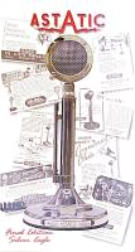
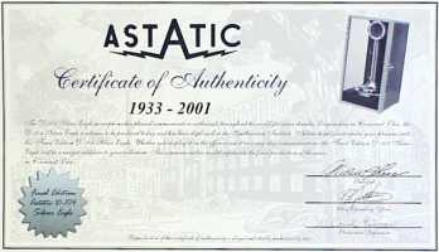
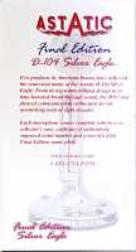
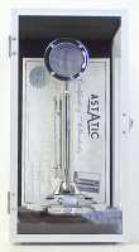
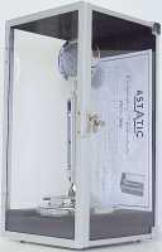


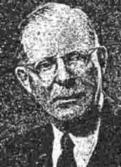
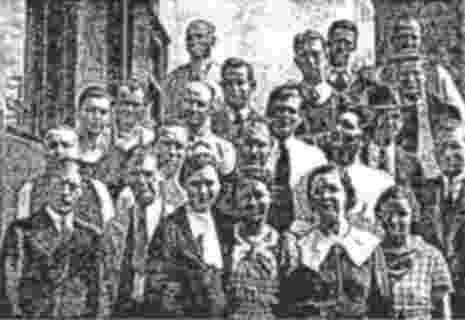

© CB World Informer Network 1996 - 2023 Worldwide Rights Reserved

December
2001 Web
Edition


- August 1996
- September 1996
- October 1996
- November 1996
- December 1996
- Review Of Midland 79-290 AM/SSB Mobile
- Cobra/Uniden SSB Chassis Mod UPDATE
- Clarifiers
- President Jackson Unlocked Clarifier Mod.
- Cobra 148 & Uniden GrantXL Clarifier Mod.
- Cobra 142GTL & Uniden Washington Clarifier
- Uniden Grant Unlocked Clarifier Mod.
- Uniden PCI22 PRO SSB Clarifier Mod.
- Review Of The Northstar DX880HL
- Big Bust At The Consumer Electronics Show
- Bob's CB Has Opened
- January 1997
- The New Mongoose Model 450 Review
- Wilson Antenna Tests The Trucker 5000
- A Company With Interference Solutions
- Solving Telephone RF Interference
- Lowpass Filters: What, Where, And How
- Using Highpass Filters For TVI
- How To Conduct A Noise Audit
- Modern Do-It-Yourself Grounding Techniques
- Using Water Pipes For RF Grounding
- Using Water Pipes For RF Grounding
- February 1997
- The New Emperor TS-3010 Review
- Bulkhead Grounding
- Grounding Coaxial Cable Shields
- Using Anti-Oxidants
- Modern Lightning Protection - RF Entry Ports
- Modern Lightning Protection - AC Power Lines
- Modern Lightning Protection - Control Lines
- Modern Lightning Arrestors - Polyphaser VS I.C.E.
- Modern Lightning Arrestors - Alpha Delta VS I.C.E.
- Modern Lightning Arrestors - Cushcraft VS I.C.E.


- July 2001
- Galaxy DX 2547 Reveiw
- Inside The DX 2547
- DX 2547 Channel Mod
- DX 2547 Clarifier Mod
- DX 2547 Photos
- DX 2547 Manual Excerpts
- The Anttron Story
- Anttron 305 Revisited
- New Antrron Products
- Aries A-SWR 460 Digital Meter
- Barjan Buys Wilson Antenna
- Wilson Electronic In Cell Phone Market
- First Web Issue
- Help Get The Word Out
- August 2001
- Sneak Preview: The New Maverick A24
- Maverick A24 Front Panel Controls
- Maverick Conversion
- Inside The Magnum Maverick A24
- Barjan Buys Francis Antenna
- Wilson Antenna, 1 Year After Barjan Buyout
- CBer Busted
- Astaic's MobileMax
- Solarcon I-Max 2000
- False Performance Claims
- CAUTION: Don't Burn Out That Radio
- Magnum's Filtered Power Cord
- Dragon Super Heavy Duty SO-239 Stud
- CBWI...Give Us Your Opinion
- September 2001
- Reveiw Of The RCI 2950DX
- RCI 2950DX Image Rejection Modification
- RCI 2950DX Coversion & Clarifier Mods
- RCI 2950DX Photos
- RCI 2950DX Board Component Layout
- RCI 2950DX Adjustment Layout
- RM-9807: Petition To Remove 155 Mile Limit
- Slip-Seat Radio Box
- RF Limited UTB-1 Adjustable Talkback Board
- A Message From The Editor
- October 2001
- November 2001
- December 2001
- January 2002
- February 2002
- July 2002
- June 2014

























